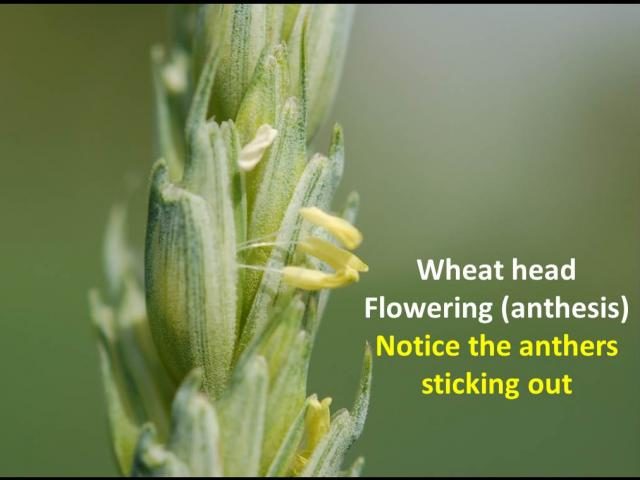By Pierce Paul, Cereal Pathologist; Jorge David Salgado, Plant Pathologist
Wheat is now heading out in some fields, particularly in southern Ohio, and will likely begin flowering in various parts of the state over the next 2-3 weeks. On average, it usually takes about 5 days from full head emergence (Feekes 10.5) to flowering, and flowering is usually over in about the same number of days. However, flowering could take a bit longer to occur and the flowering window could be much wider under cool conditions similar to those forecasted for the next week or so.
Once wheat begins to flower, scab and vomitoxin become our biggest concerns. It is therefore time for a refresher on head scab, and some useful tips to help you use the scab forecasting system to monitor the risk of this disease.
Scab develops best and the risk is highest when wet, humid weather conditions occur during flowering. These conditions favor the production of spore by the scab fungus, Fusarium graminearum, infection of the wheat heads, development of the disease and production of vomitoxin. Scab not only affects wheat, it also affects barley and other small grains, causing significant grain yield and quality losses, particularly if the variety is susceptible and the right fungicide is not applied at the correct growth stage.
Unlike foliar diseases, you cannot wait until you see scab symptoms to make a fungicide application. It usually takes 2-3 weeks for symptoms to develop; by that time it is too late to apply a fungicide. If it rains and you cannot apply the fungicide at the recommended flowering stage for wheat or heading for barley, you can still get good control with applications made about 4-6 days after the recommended time.
Use the scab risk tool at http://www.wheatscab.psu.edu/ to help you monitor the risk for scab and as a guide for making fungicide application. The tool is currently showing that the risk is moderate to high (yellow and red colors on the map) across most of the state for wheat flowering today and will continue to be moderate to high over the next 3 days. Most of our wheat is not yet at the flowering growth stage, but continue to monitor the crop to see when flowering begins and keep your eyes on the forecasting system to see how the risk changes as the crop approaches flowering.
Prosaro and Caramba are the two fungicides recommended for head scab control. Stay away from the strobilurins when the risk for scab is high, as they have been linked to higher grain contamination with vomitoxin.
For more information, see Fusarium Head Blight or Head Scab of Wheat, Barley and Other Small Grain Crops and the Fusarium Head Blight Forecasting System.






